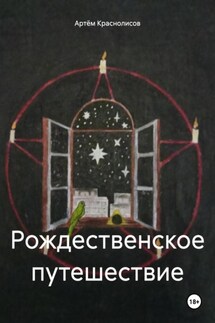Зов Ктулху / The Call of Chulhu - страница 3
Inspector Legrasse had the least interest in archaeology. He was prompted by purely professional considerations. The statuette, idol, fetish, or whatever it was, had been captured[39] some months before in the wooded swamps south of New Orleans during a raid on a supposed voodoo meeting.[40] And the rites connected with it were so singular and hideous, that the police treated it as a dark cult totally unknown to them, and infinitely more diabolic than even the blackest of the African voodoo circles. Absolutely nothing was discovered of its origin: only erratic and unbelievable tales from the captured members; hence the police wanted to learn something which might help them to place the frightful symbol, and through it understand the cult itself.
Inspector Legrasse was not prepared for the sensation which his offering created. One sight of the thing had been enough to throw the assembled scientists into a state of tense excitement. They crowded around him to gaze at the diminutive strange figure, apparently very old and unknown. Strange school of sculpture had animated this terrible object, yet centuries and even thousands of years seemed recorded in its dim and greenish surface of stone.
The figure, which was finally passed slowly from man to man for close and careful study, was between seven and eight inches in height. It represented a vaguely anthropoid monster, with an octopus-like head, whose face was a mass of feelers, a scaly, rubbery-looking body, prodigious claws on hind and fore feet, and long, narrow wings behind. This thing, which was an embodiment of a fearsome and unnatural malignancy, squatted evilly on a rectangular block or pedestal covered with undecipherable characters. The tips of the wings touched the back edge of the block, the seat occupied the centre, while the long, curved claws of the hind legs gripped the front edge and extended toward the bottom of the pedestal. The cephalopod head[41] was bent forward, so that the ends of the facial feelers brushed the backs of huge fore paws which clasped the elevated knees. The creature looked abnormally life-like and fearful because its source was totally unknown. Its vast, awesome, and incalculable age was unmistakable; but it was not connected to any known type of art belonging to civilisation’s youth – or indeed to any other time. Even its material was a mystery; for the soapy, greenish-black stone with its golden or iridescent flecks and striations resembled nothing familiar[42] to geology or mineralogy. The characters along the base were totally unknown; and nobody could form the least notion of even their remotest linguistic kinship. They, like the subject and material, belonged to something horribly remote and distinct from mankind as we know it.
And yet, as the members shook their heads and confessed defeat at the Inspector’s problem, there was one man in that gathering who recognized bizarre familiarity in the monstrous shape and writing. This person was the late William Channing Webb,[43] Professor of Anthropology in Princeton University, and a famous explorer.
Professor Webb had been engaged, forty-eight years before, in a tour of Greenland and Iceland in search of some Runic inscriptions. On the West Greenland coast he had met a singular tribe or cult of degenerate Esquimaux











